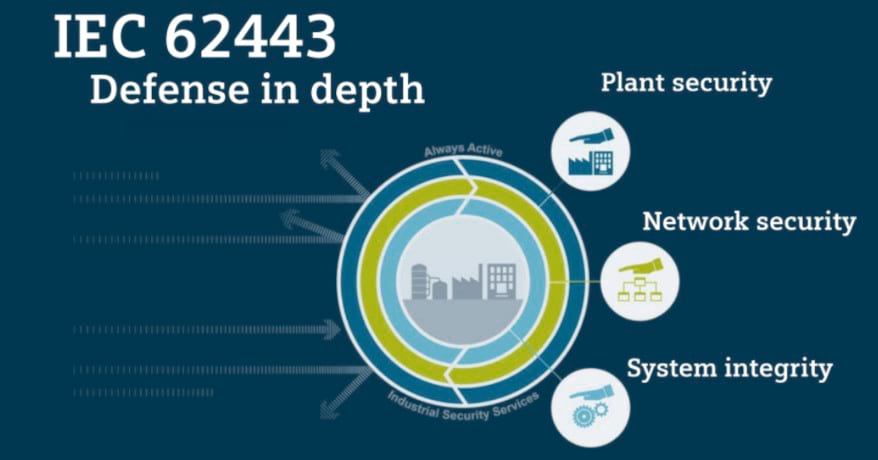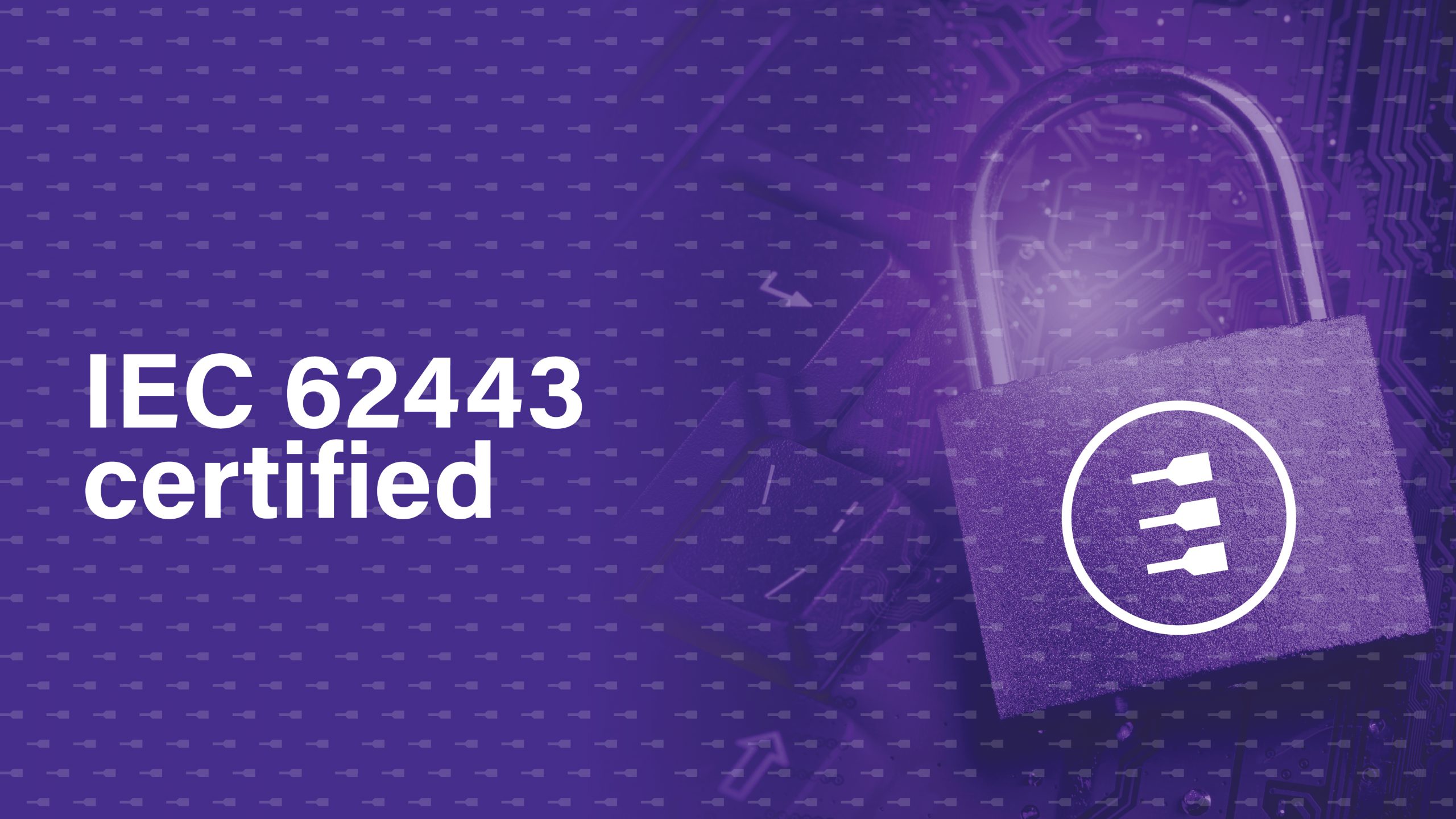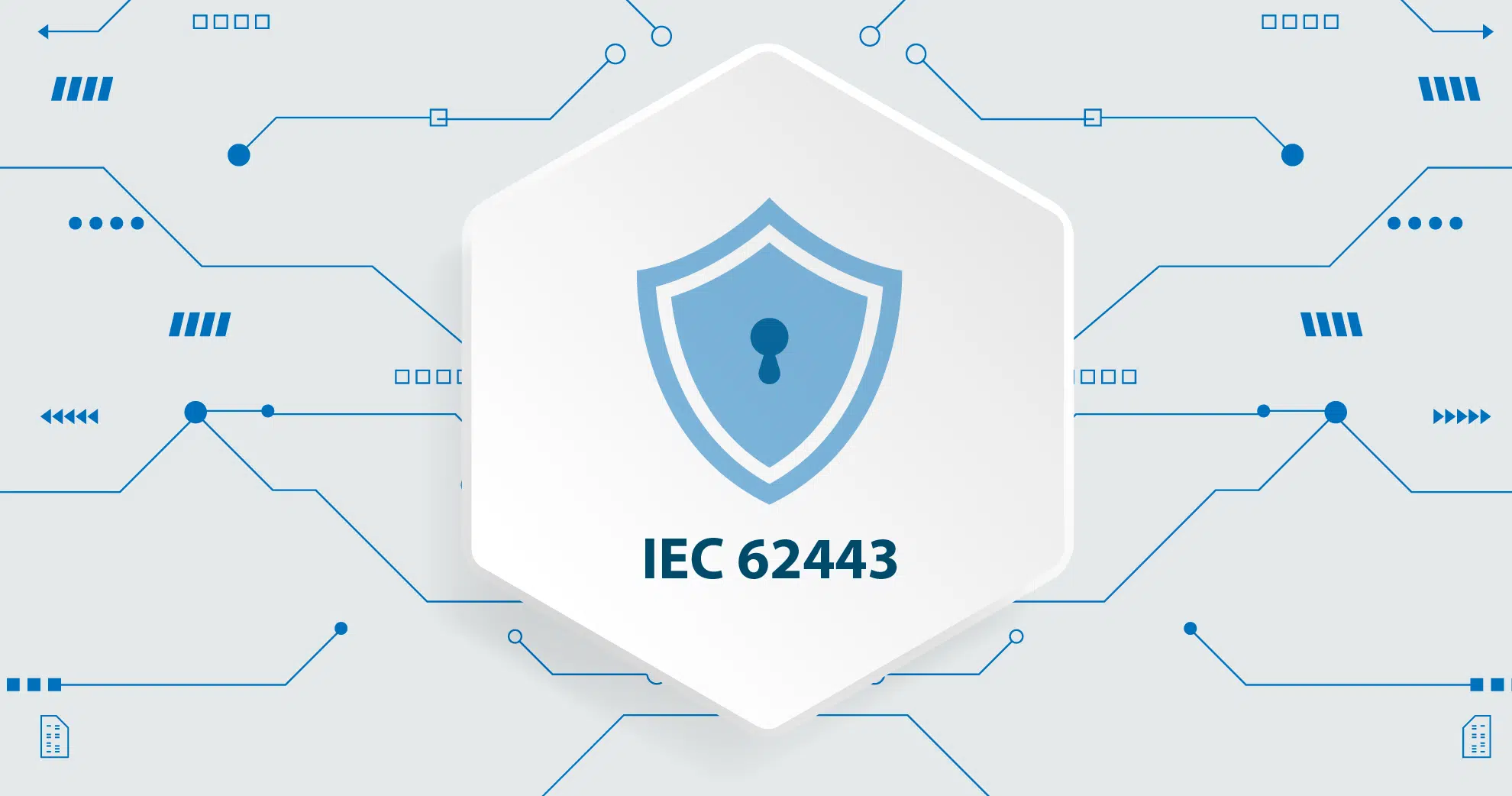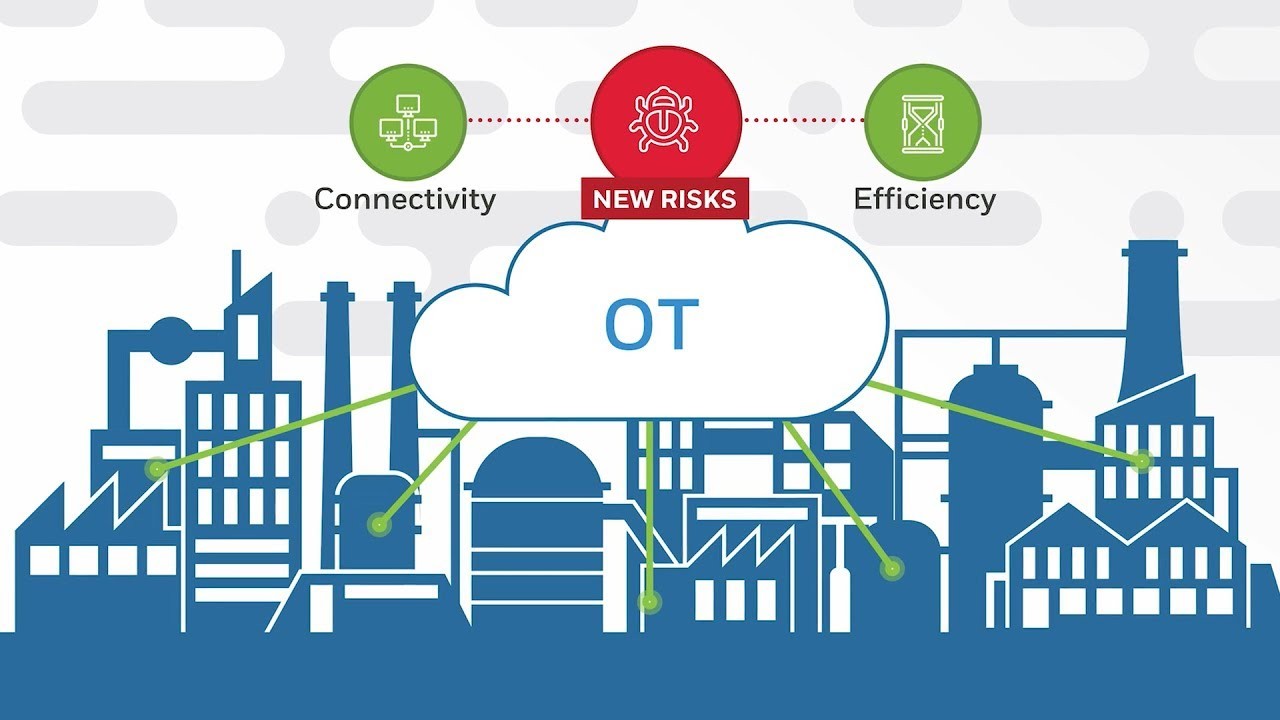The International Electrotechnical Commission's (IEC) 62443 series stands as a beacon in the realm of industrial cybersecurity, offering a comprehensive and globally recognized framework dedicated to securing industrial automation and control systems (IACS). Envisaged as a response to the evolving cyber threats targeting critical infrastructure, IEC 62443 provides a structured approach to fortifying the resilience and reliability of operational technology (OT). This series of standards, organized into various parts, establishes a robust foundation for identifying, assessing, and mitigating cybersecurity risks throughout the entire lifecycle of industrial systems. By addressing the unique challenges posed by the intersection of technology and industry, IEC 62443 plays a pivotal role in shaping the future of OT security, ensuring the continuity and safety of essential processes in an interconnected and digitized world.

Operational Technology (OT) security refers to the measures and practices implemented to safeguard the critical infrastructure and industrial control systems that form the backbone of various industries. Unlike traditional IT security, which primarily focuses on information systems, OT security is dedicated to ensuring the resilience and reliability of processes and technologies used in manufacturing, energy, and other operational sectors. The goal is to protect physical assets, prevent disruptions, and mitigate potential risks to industrial operations.
IEC 62443 compliance represents adherence to a set of international standards specifically designed for industrial automation and control systems (IACS) security. These standards, developed by the International Electrotechnical Commission (IEC), provide a comprehensive framework for establishing, implementing, operating, monitoring, reviewing, maintaining, and improving the security of IACS. Achieving IEC 62443 compliance demonstrates a commitment to ensuring the integrity, availability, and confidentiality of industrial processes and systems.
IEC 62443 plays a pivotal role in enhancing OT security by offering a systematic and risk-based approach. It provides a structured framework for identifying and addressing cybersecurity vulnerabilities in IACS. By incorporating security measures at every stage of the system lifecycle, from design to decommissioning, IEC 62443 helps organizations establish a robust security posture. This proactive approach ensures the continuous protection of critical infrastructure against evolving cyber threats.
The elements of IEC 62443 encompass a range of guidelines, standards, and practices that collectively contribute to the cybersecurity of industrial automation and control systems. These elements include detailed specifications for conducting risk assessments, implementing security policies, securing network architectures, managing access controls, and addressing cybersecurity throughout the system development lifecycle.
IEC 62443 is divided into two main parts: Part 1 focuses on the general concepts and models, providing a foundation for the entire series, while Part 2 delves into the specific requirements for implementing an IACS security program. These parts work in conjunction to create a comprehensive and adaptable framework that addresses the unique challenges of industrial cybersecurity.
Industries benefit significantly from IEC 62443 by gaining a standardized and globally recognized approach to OT security. This framework helps organizations identify and mitigate cybersecurity risks, enhance the resilience of their critical infrastructure, and ensure the continuous and secure operation of industrial processes. The adoption of IEC 62443 contributes to increased operational efficiency, reduced downtime, and improved overall cybersecurity posture.
The seven foundational requirements of IEC 62443 encompass key aspects such as defining and implementing security policies, conducting risk assessments, establishing secure architectures and network design, implementing security controls, ensuring robust system development and maintenance processes, managing access controls, and continuously monitoring and improving the overall cybersecurity posture.
The IEC 62443 reference model provides a structured framework for understanding and implementing cybersecurity in industrial automation and control systems. It consists of three main domains: the Enterprise Zone, the Control Zone, and the Field Zone. Each zone represents different levels of the industrial architecture, and the reference model helps organizations design and implement security measures tailored to the specific characteristics and requirements of each zone.
While both IEC 27001 and IEC 62443 address cybersecurity, they cater to different domains. IEC 27001 is a generic standard focused on information security management systems (ISMS) applicable to various industries. In contrast, IEC 62443 is specifically tailored for the unique challenges of industrial automation and control systems. While IEC 27001 provides a broader perspective, IEC 62443 offers specialized guidance for securing critical infrastructure and operational processes.
Certification for IEC 62443 is typically carried out by accredited certification bodies that have expertise in industrial cybersecurity. These bodies assess organizations against the specific requirements of IEC 62443 to ensure compliance. The certification process involves thorough evaluations of security policies, implementation of security controls, and overall adherence to the standards outlined in the IEC 62443 series.

IEC 62443 defines security levels (SL) to categorize the robustness of security measures implemented in industrial automation and control systems. These protection levels range from SL1 (basic security) to SL4 (high-security). The selection of an appropriate protection level depends on the criticality of the assets and the potential impact of a cybersecurity breach on industrial operations.
The IEC 62443 policy and procedures encompass a set of documented guidelines and protocols established by organizations to govern the implementation and maintenance of cybersecurity measures based on the IEC 62443 standards. These documents outline the overarching security strategy, specific procedures for risk management, incident response, access controls, and other aspects crucial for maintaining a robust and compliant security posture in industrial environments. Adhering to well-defined policies and procedures ensures consistency and effectiveness in addressing cybersecurity challenges.
At Valency Networks, we recently undertook an innovative implementation case study involving the integration of IEC 62443 standards for a cutting-edge IoT product. As certified IEC 62443 experts, our team was entrusted with securing an IoT solution, where a physical Remote Terminal Unit (RTU) seamlessly connected to cloud services while running its own web application on the device. Our holistic approach to cybersecurity, rooted in the IEC 62443 framework, ensured the highest standards of protection for this complex and interconnected ecosystem.
In this case, our expertise in IEC 62443 played a pivotal role in designing and implementing robust security measures. We meticulously assessed the unique challenges posed by the integration of a physical RTU device with cloud services, crafting a tailored security strategy aligned with IEC 62443 standards. Our focus on the entire product lifecycle, from development to deployment, underscored our commitment to safeguarding every facet of the IoT solution.
By leveraging IEC 62443, we not only addressed potential vulnerabilities but also proactively instilled a resilient cybersecurity posture. This implementation showcases Valency Networks' proficiency in navigating the intricacies of IoT security, emphasizing our role as certified experts in IEC 62443 standards. The successful integration of this IoT product stands as a testament to our dedication to providing cutting-edge cybersecurity solutions, ensuring the integrity and confidentiality of our clients' technological advancements.
As a Germany-based IoT device manufacturer specializing in electrical substation security, our recent collaboration with Valency Networks marked a significant milestone in fortifying our products with the highest cybersecurity standards. In this implementation case study, we focused on two integral components of the IEC 62443 standards: Part 4-1 and Part 4-2.
Part 4-1 of IEC 62443 specifically addresses the security aspects of product development for industrial automation and control systems. Working closely with Valency Networks, we meticulously implemented the guidelines outlined in this standard during the product development phase. Our collective efforts ensured that every facet of the IoT device, crucial for electrical substation security, adhered to the robust security measures mandated by IEC 62443 Part 4-1.
Moving on to Part 4-2, which pertains to the secure-by-design principles for industrial automation and control systems, Valency Networks played a pivotal role in tailoring our IoT devices to meet these stringent criteria. With a focus on secure architecture and design, we collaboratively enhanced the resilience of our devices against potential cyber threats. Valency Networks' expertise in IEC 62443 empowered us to create an IoT solution for electrical substations that not only met industry standards but surpassed them in terms of security and reliability.
Valency Networks' contribution in aligning our products with IEC 62443 standards was invaluable. Their proficiency in navigating the intricacies of Part 4-1 and Part 4-2 not only ensured compliance but also enhanced the overall security posture of our IoT devices used in electrical substations. This case study exemplifies our commitment to delivering state-of-the-art, secure solutions in collaboration with certified experts, reinforcing our standing as a leader in the field of industrial cybersecurity.
In our pursuit of ensuring robust cybersecurity for an IoT device designed for deployment in petrochemical refineries, we engaged Valency Networks to conduct a comprehensive Vulnerability Assessment and Penetration Testing (VAPT). Specifically focusing on Part 4-2 compliance of the IEC 62443 standard, our goal was to fortify the network security and web application security of this critical device.
Valency Networks, renowned for their expertise in IEC 62443 standards, executed a thorough VAPT to identify and mitigate potential vulnerabilities within the IoT device's network infrastructure. This involved an in-depth assessment of the device's architecture, communication protocols, and network configurations to align with the secure-by-design principles outlined in Part 4-2. By leveraging their proficiency in industrial cybersecurity, Valency Networks played a pivotal role in enhancing the overall security posture of the IoT device.

Additionally, Valency Networks conducted meticulous web application security testing to ensure that the device's embedded web application adhered to the security guidelines set forth by IEC 62443. This encompassed scrutinizing the application's code, authentication mechanisms, and data handling processes to mitigate any vulnerabilities that could pose a threat to the device's secure operation within petrochemical refineries.
The VAPT performed by Valency Networks not only identified potential weaknesses but also provided actionable recommendations to fortify the IoT device against cyber threats. This collaborative effort exemplifies our commitment to adhering to the highest cybersecurity standards, particularly in the context of Part 4-2 compliance. The successful VAPT conducted by Valency Networks underscores their role as trusted partners in ensuring the security and reliability of IoT devices destined for deployment in critical industrial environments.
The adoption of IEC 62443 has been steadily increasing across industries, especially in critical infrastructure sectors such as energy, manufacturing, and healthcare.
IEC 62443 is globally recognized and acknowledged as a leading standard for industrial cybersecurity. Many countries and organizations are aligning their cybersecurity practices with the principles outlined in this standard.
With the rise in cyber threats targeting critical infrastructure, there is a growing awareness of the need for robust cybersecurity measures. This has led to increased investments in compliance frameworks like IEC 62443.
Organizations are allocating a significant portion of their cybersecurity budgets to ensure compliance with IEC 62443. This includes investments in technology, training, and assessments to meet the standard's requirements.
The increasing frequency and sophistication of cyber-attacks on industrial systems have highlighted the importance of standards like IEC 62443 in preventing and mitigating cybersecurity incidents.
More organizations are seeking IEC 62443 certifications to demonstrate their commitment to industrial cybersecurity. Regular audits and assessments are being conducted to verify compliance and identify areas for improvement.
IEC 62443 is often integrated with other cybersecurity standards such as ISO/IEC 27001 to create a comprehensive and layered approach to cybersecurity.
Hypothetically, let's consider a global adoption rate of IEC 62443 compliance across critical infrastructure industries. As of 2022, this adoption could be estimated at around 60%, with a projection for steady growth over the next few years.
In the energy sector, a hypothetical figure might indicate an 80% adoption rate of IEC 62443 compliance, given the sector's high dependence on secure industrial control systems.
The manufacturing industry, being a key player in critical infrastructure, could have a hypothetical compliance rate of 55%, with ongoing efforts to increase this figure due to rising cybersecurity concerns.
Hypothetically, organizations are allocating approximately 20% of their cybersecurity budgets to initiatives related to IEC 62443 compliance. This includes investments in cybersecurity technologies, staff training, and compliance assessments.
Approximately 40% of organizations in critical infrastructure have hypothetically pursued IEC 62443 certification to showcase their commitment to industrial cybersecurity. This figure reflects a growing recognition of the importance of formal validation.
Hypothetically, 70% of organizations adopting IEC 62443 are integrating it with other cybersecurity standards, such as ISO/IEC 27001, for a more comprehensive and layered security approach.
Organizations that have implemented IEC 62443 compliance measures have hypothetically experienced a 30% reduction in cybersecurity incidents related to industrial control systems.
Hypothetically, regions with a higher concentration of critical infrastructure, such as North America and Europe, may have a compliance rate of 65%, while other regions may vary between 40% and 55%.
Valency Networks stands as a beacon of excellence in the realm of Operational Technology (OT) security and compliance implementation, fortified by our prestigious certification in the IEC 62443 standards. As a certified expert in IEC 62443, our team undergoes rigorous training and assessments to ensure a deep understanding of the intricate nuances of industrial cybersecurity. This certification serves as a testament to our commitment to adhering to the highest industry standards and guidelines.
Our expertise extends beyond mere certification – we take pride in being at the forefront of OT security and compliance implementation. Our dedicated professionals leverage the comprehensive framework provided by IEC 62443 to design and implement robust security measures tailored to the unique challenges of critical infrastructure sectors. Valency Networks excels in navigating the complex landscape of industrial automation and control systems, ensuring that our clients receive not only compliance but a fortified security posture.

What sets us apart is our holistic approach to OT security. We go beyond mere compliance checkboxes, focusing on understanding the specific needs and nuances of our clients' operational environments. By integrating best practices from IEC 62443, we tailor our solutions to address the evolving cyber threats that can impact industrial processes. This commitment to excellence, combined with our certified status in IEC 62443, positions Valency Networks as a trusted partner for organizations seeking unparalleled expertise in OT security and compliance implementation.
In essence, Valency Networks combines the strength of certification with a deep-rooted understanding of OT security, making us the go-to choice for organizations aiming not just for compliance, but for a robust and resilient defense against the ever-evolving landscape of industrial cyber threats.
Valency Networks stands out as the undisputed leader in the field of Operational Technology (OT) security, setting the benchmark for excellence in the industry. What distinguishes us as the best in this sector is our unwavering commitment to delivering unparalleled expertise, innovation, and results. Our team, fortified by certifications in the esteemed IEC 62443 standards, operates at the forefront of OT security, ensuring that our clients receive not just compliance but a comprehensive and tailored security solution.
We pride ourselves on our holistic approach, recognizing that effective OT security goes beyond standard protocols. By combining in-depth knowledge of industrial automation and control systems with the latest advancements in cybersecurity, we craft bespoke strategies that address the unique challenges faced by critical infrastructure sectors. Our dedication to continuous learning and adaptation allows us to stay ahead of emerging threats, providing our clients with cutting-edge solutions that fortify their operational environments.
At Valency Networks, we understand that OT security is not a one-size-fits-all endeavor. Our solutions are meticulously crafted to align with the specific needs and nuances of each client, ensuring a robust defense against cyber threats. Our track record of success, client satisfaction, and a team of certified experts make us the go-to choice for organizations seeking the very best in OT security. When it comes to safeguarding critical infrastructure, Valency Networks stands as the pinnacle of excellence, consistently setting industry standards and redefining the landscape of OT security.